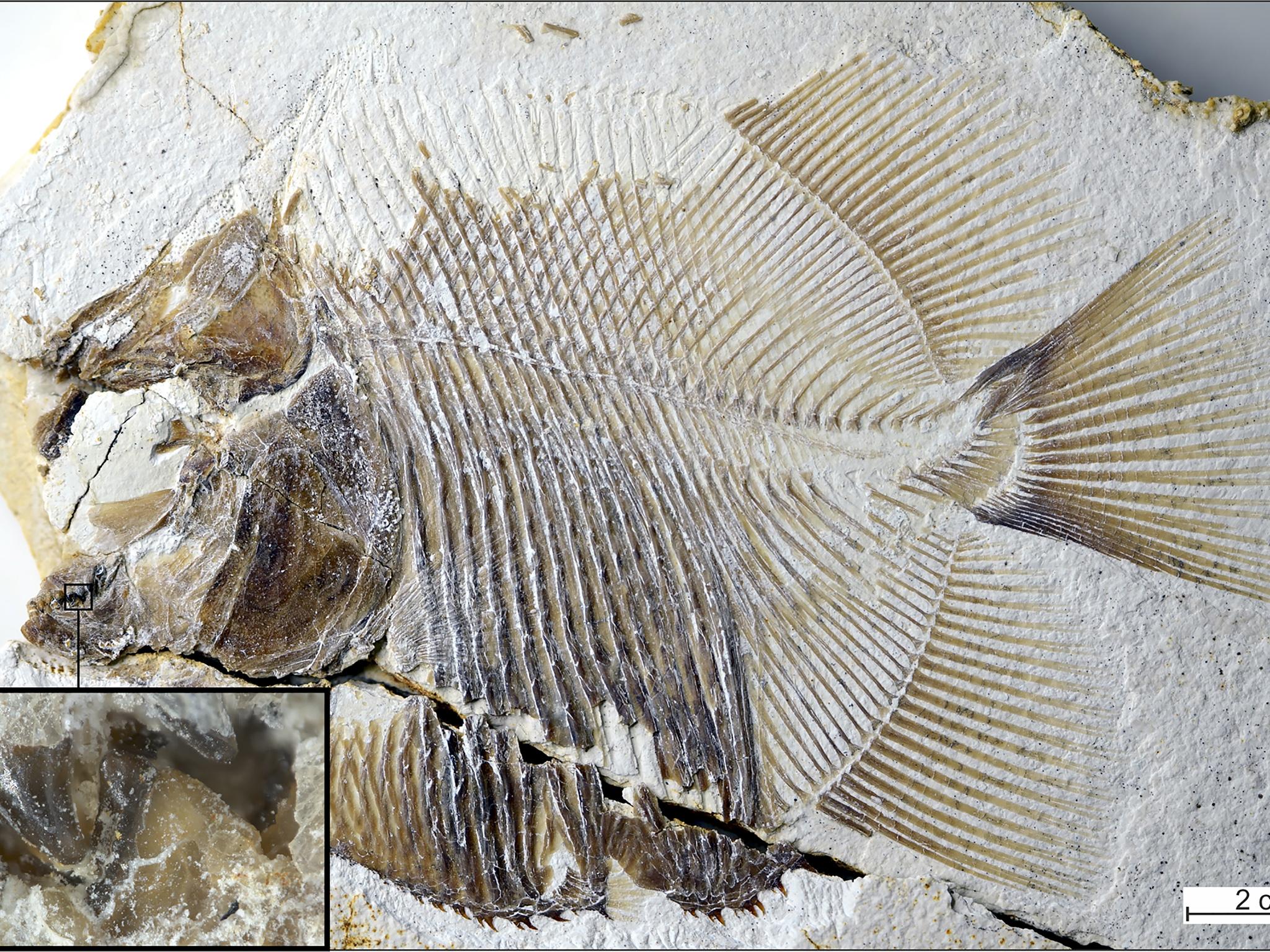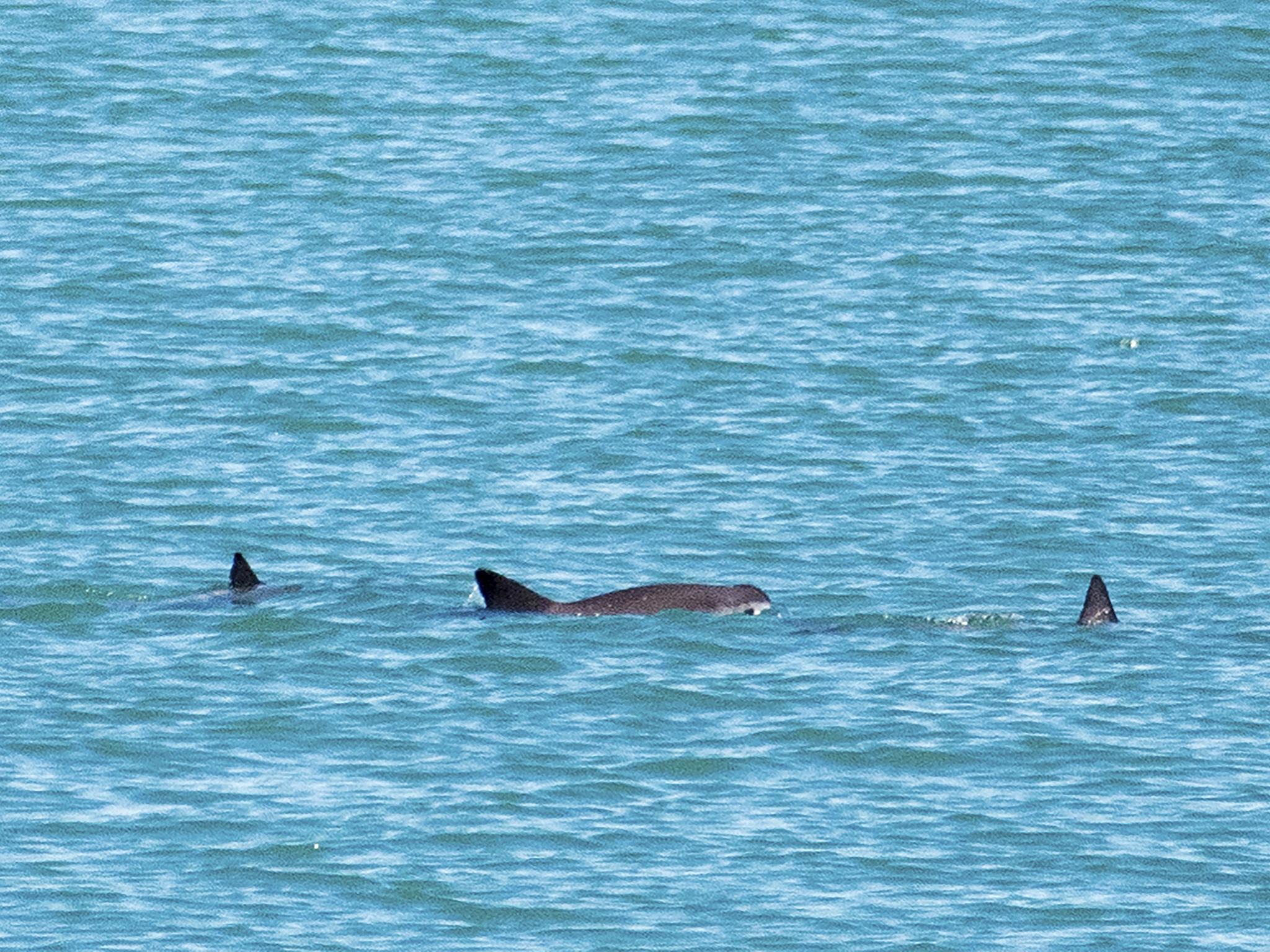Science news in brief: From endangered vaquitas to prehistoric piranha-like predators
And a roundup of other stories from around the world

Your support helps us to tell the story
From reproductive rights to climate change to Big Tech, The Independent is on the ground when the story is developing. Whether it's investigating the financials of Elon Musk's pro-Trump PAC or producing our latest documentary, 'The A Word', which shines a light on the American women fighting for reproductive rights, we know how important it is to parse out the facts from the messaging.
At such a critical moment in US history, we need reporters on the ground. Your donation allows us to keep sending journalists to speak to both sides of the story.
The Independent is trusted by Americans across the entire political spectrum. And unlike many other quality news outlets, we choose not to lock Americans out of our reporting and analysis with paywalls. We believe quality journalism should be available to everyone, paid for by those who can afford it.
Your support makes all the difference.Just a blob of cells? Well, just wait 26 seconds
Researchers at the Howard Hughes Medical Institute’s Janelia Research Campus in Ashburn, Virginia, have built a new microscope that can trace individual cells’ origins and movement in real time, sketching a virtual map of how mammals develop in the womb.
The photos, taken in a span of 26 seconds, show a blob’s tiny cells multiply, interact and organise into the first organ systems of a living mouse embryo. The hollow crater that forms on the left of the blob will give rise to the mouse’s stomach, pancreas and liver.
The narrow white line that begins to stretch across the centre of the images is the notochord, or an early backbone.
The results, published recently in the journal Cell, could have critical applications for understanding how organ systems form in humans as well, potentially assisting treatments of birth defects.
“We have been previously limited to snapshots in time, like reading random pages torn out of a book,” said Dr Kate McDole, a developmental biologist and one of the study’s co-authors. “But how are the organs actually formed? What’s the timing, the tissues, the dynamics that are involved? You can only study that by looking at it live.”
The research team, led by Dr Philipp Keller, a physicist and biologist, set out to overcome the limitations of confocal microscopy, a traditional imaging method that casts light through an entire specimen for extended periods of time.
That method was too harsh for the delicate embryonic cells of a mouse. “You’d basically be microwaving it,” Dr McDole said.

City rats eat meat. Country rats eat what they can
It’s been nearly 3,000 years since Aesop wrote “The Town Mouse and the Country Mouse,” the fable in which an urban rodent exposes his rural cousin to the city’s superior dining options. A new study suggests Aesop was right about the geographical differences in rodent diets.
By analysing the remains of brown rats that lived in and around Toronto between 1790 and 1890, researchers have determined that city rats enjoyed a higher quality and more stable diet than rural rats did. Just as in Aesop’s tale, the city rats benefited from the largesse of human waste, whereas country rats scraped by.
“Rats that lived in the city had a lot more meat in their diet,” said Dr Eric Guiry, an archaeologist at the University of British Columbia and lead author of the study, which was published recently in Proceedings of the Royal Society B. “You could see the difference in their bones.”
Dr Guiry and his co-author, Dr Michael Buckley of the University of Manchester, are specialists in the emerging field of paleoproteomics, which uses the proteins in ancient bones to glean insights into an animal’s behaviour. Dr Guiry wanted to use the technique on rats to see what it could reveal about human populations in the 1800s — a less onerous proposal than digging up and analysing human remains. Knowledge gained from the research also could help cities better control their rat populations.
“Rats are really interesting, because their diets are a reflection of foods people leave lying around,” Dr Guiry said.
The real challenge, he said, is finding usable remains: “Until recently, archaeologists would find rat bones and just think, ‘Oh, rubbish.'”
More urgently, he said, the method could hold promise for studying rat behaviour in cities and controlling rat infestations, a task that costs billions every year.
Why southeast Asia and Australia’s coral reefs became so rich in species
Dive into the coral reefs of southeast Asia or Australia and you’ll likely spot a wrasse. But which of the hundreds of kinds of wrasses will you see?
These fish can be one inch to more than eight feet in length. Some are sombre-coloured, others look like they’re attending a rave. Different species have their own creative feeding strategies: humphead wrasses crush shellfish; tubelip wrasses slurp corals and cleaner wrasses act like a carwash, eating parasites and dead tissue off other sea creatures.
This spectacular diversity stems from wrasse ancestors that migrated from the prehistoric Tethys Sea to the area that now bridges the Pacific and Indian oceans. There, in a vast and vibrant cradle of coral reefs, they settled and steadily diversified over tens of millions of years.
“It has taken tens of millions of years to build the biodiversity of coral reefs, but it may take us only decades to destroy it,” said Mary Wisz, a professor at the World Maritime University in Sweden who was not involved in the study.
Explorers have long wondered why the Central Indo-Pacific holds such exceptional bounty, said Elizabeth Miller, a PhD candidate studying ecology and evolutionary biology at the University of Arizona and the lead author of the paper.
Using databases that aggregate research done by hundreds of scientists, Miller’s team categorised more than 12,000 fish species as present or absent in eight marine regions around the world.
The researchers then traced living species back in time, using an evolutionary tree, statistics and computer simulations to infer where their ancestors originated and when their lineages might have moved to different places.
Overall, the scientists found, biodiversity in a region today is highly related to the age and number of colonisations it has experienced. The Central Indo-Pacific is so diverse largely because many old lineages have settled there.

Lurking underwater, a prehistoric wolf in sheep’s clothing
Some 150 million years ago, the sponge and coral reefs of what is now southern Germany might not have suspected there was a piranha-like predator prowling among them.
Back then, these waters were teeming with bony fish called pycnodontiformes, which were known for their crushing teeth that were likely used for smashing snail shells and sea urchin spines. Scientists thought, for the most part, that other fish were not on their menu.
But now, researchers have found a pycnodontiform with razor-sharp teeth that they think ripped chunks of flesh, especially fins, from other fish. They named it Piranhamesodon pinnatomus.
The findings, published recently in the journal Current Biology, represent the earliest record of flesh-eating in bony fish and may cause scientists to rethink the predatory practices of this group.
“It’s a wolf in sheep’s skin,” said Dr Martina Kölbl-Ebert, a vertebrate paleontologist and director of the Jura-Museum Eichstätt in Germany. “This one had daggers and scissors in the mouth, implying a completely different mode of feeding.”
This area was most likely a shallow tropical sea dotted with small islands inhabited by insects, lizards and dinosaurs when the piranha-like fish was alive, according to Dr Kölbl-Ebert. After extracting the fossil from the rocks, they performed a micro-CT scan on the specimen.
Most pycnodonts had front teeth shaped like chisels that they used for grasping, as well as flat, cobble-shaped teeth for crushing. But the new species, just a few inches in length, had six long, pointed knife-like teeth that were slightly curved backwards, as well as six triangular teeth with serrated edges.
While its pycnodont relatives mostly swallowed their prey whole, the sharp teeth of the newly discovered fish would have allowed it to munch on prey that was much larger than itself.

Scientists catch rare glimpses of endangered vaquita
Scientists working to prevent the extinction of an elusive porpoise called the vaquita went out to sea last month, anxious about what they would – or would not – find.
It has been almost two years since the last count of vaquitas, when scientists estimated that only 30 remained in the Gulf of California, their only habitat.
Since then, the illegal fishing that has decimated the species has outpaced law-enforcement efforts. Seven vaquitas have died or been killed, and experts fear that more have been entangled in gill nets and drowned.
“Every time I go to look for vaquitas, I worry it will be my last time to see them or that we may not even be able to find them,” Dr Barbara Taylor, a biologist at the National Oceanic and Atmospheric Administration, wrote in an email.
She was aboard the ship last month when a mother and calf surfaced at sea, a sight greeted with elation and relief.
Later that day, expedition scientists spotted two more adults. And the following day, at least two additional pairs appeared, including what appeared to be another calf.
The calf sightings were particularly important because they may provide the first evidence that vaquitas can produce one calf annually instead of one every two years, as scientists had believed.
Observers spotted an adult vaquita last year and again this year, identified by distinctive markings on the dorsal fin. Presumably a female, she was accompanied by a calf last year and by a smaller calf this year.
“Calving every year doubles their growth rate and gives more hope for recovery,” Dr Taylor said.
Distinguished by a rounded profile and dark patches around the mouth and lips that give it an almost childlike look, the vaquita was rare to begin with, inhabiting only the upper reaches of the Gulf of California.
The porpoise has long been endangered by curtain-like gill nets set to catch shrimp, sierra and other fish. But it was the illegal trade in a fish called the totoaba that pushed the vaquita to the edge of extinction. Demand in China for the endangered totoaba’s swim bladder, considered to be a delicacy, drives a far-flung criminal network.
Scientists were confident that a few vaquitas survived, because marine acoustic monitors continue to registered the echo location clicks they make to find food.
© New York Times
Join our commenting forum
Join thought-provoking conversations, follow other Independent readers and see their replies
Comments